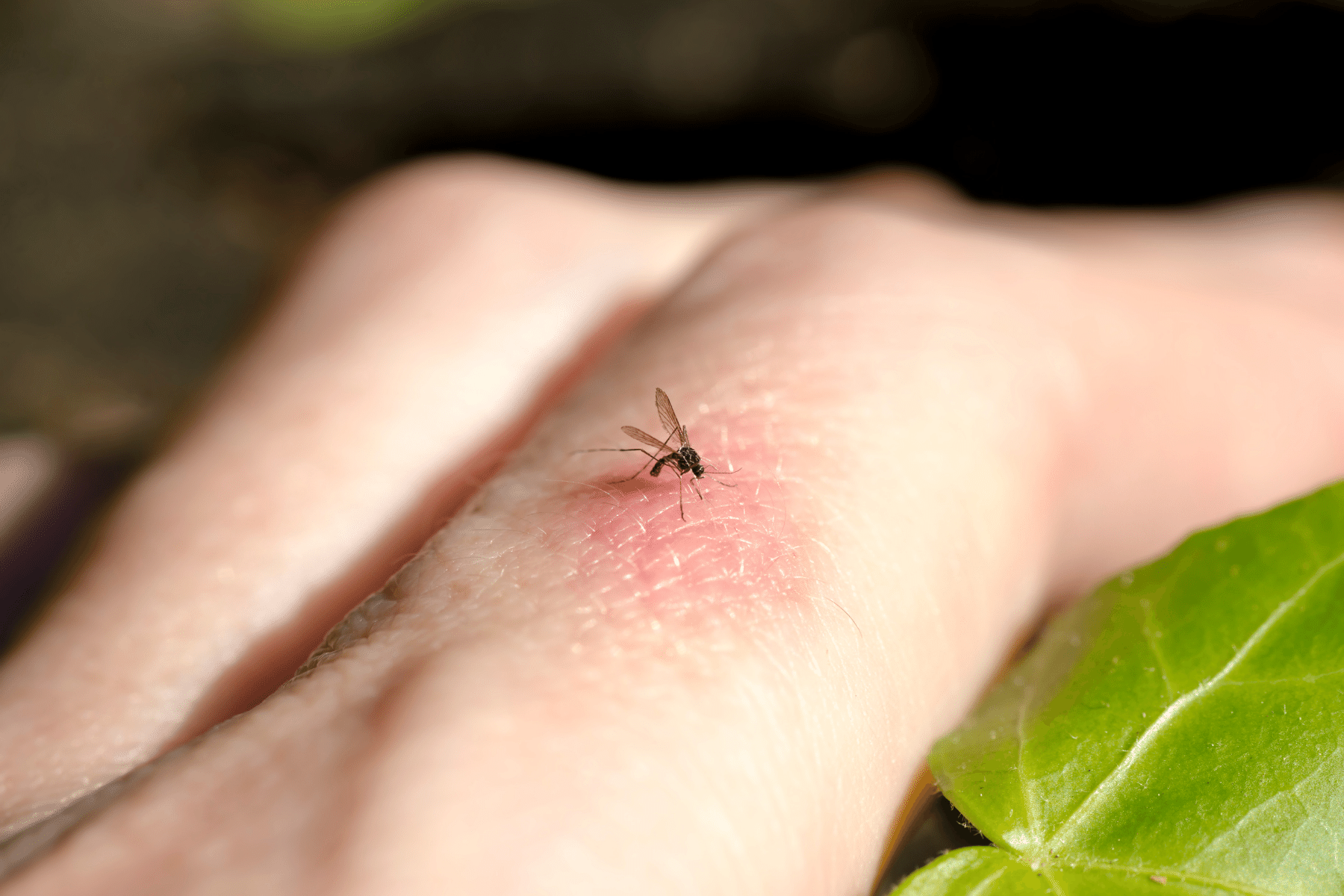Mosquitoes love me. I can’t step outside in the evening anywhere and not get attacked by the pesky bugs.
The only thing that works for me is bug sprays with DEET. But the strong scent makes me not want to put it on every time I step outside. So, let’s find a more natural way to prevent getting all those itchy mosquito bites.
Before I get into the plants, I want to share some other solutions that may work for you. Things like essential oils, lemon balm, and citronella candles could be an excellent way for you to keep the biting bugs away. Then, of course, you could ask the city or county you live in about using a professional mosquito exterminator.
There are also some lotions and wipes that have a strong fragrance designed to moisturize your skin while acting as an effective mosquito repellent. For me, this is hit or miss. Some are a great choice while others don’t work too well for me.
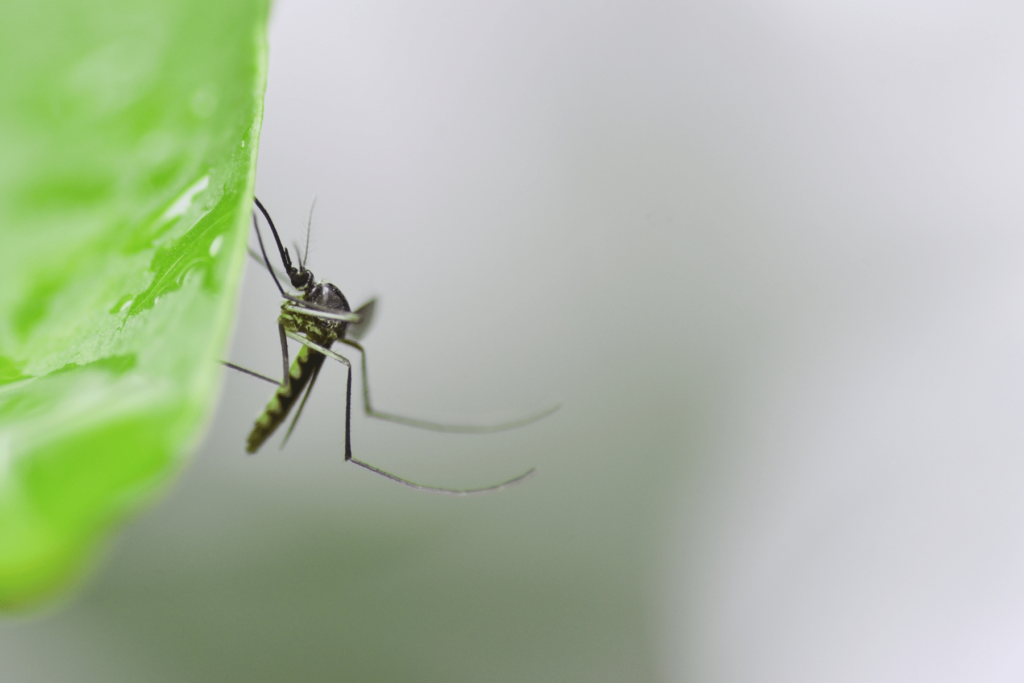
Ready to hop into the garden center with me to shop for some mosquito-repellent plants? Let’s go!
12 Best Plants That Repel Mosquitoes
1. Lavender Plants
Have you ever noticed that insects, rabbits, and other animals never wipe out lavender plants? It’s because of its strong smell, which comes from the essential oils found in the leaves. This plant is very drought resistant and needs full sun and good drainage. Although it can withstand many climates, it thrives in warmer areas.
How To Grow Lavender Plants
To plant lavender successfully, make sure you have a space in the ground, flowerbeds, or flower pots for the species to develop.
Paying attention to the soil’s drainage and avoiding water accumulation is vital. Water it in the first 30 days when the ground is dry. After that, it will be fully adapted and grow independently.
As for the sun, the secret of lavender’s aroma lies in the amount of light the leaves receive. The more sunlight and heat it receives, the more essential oil it will produce and the more fragrant the plant’s leaves will be.
If you want to try a lavender plant, click here to order one on Amazon.
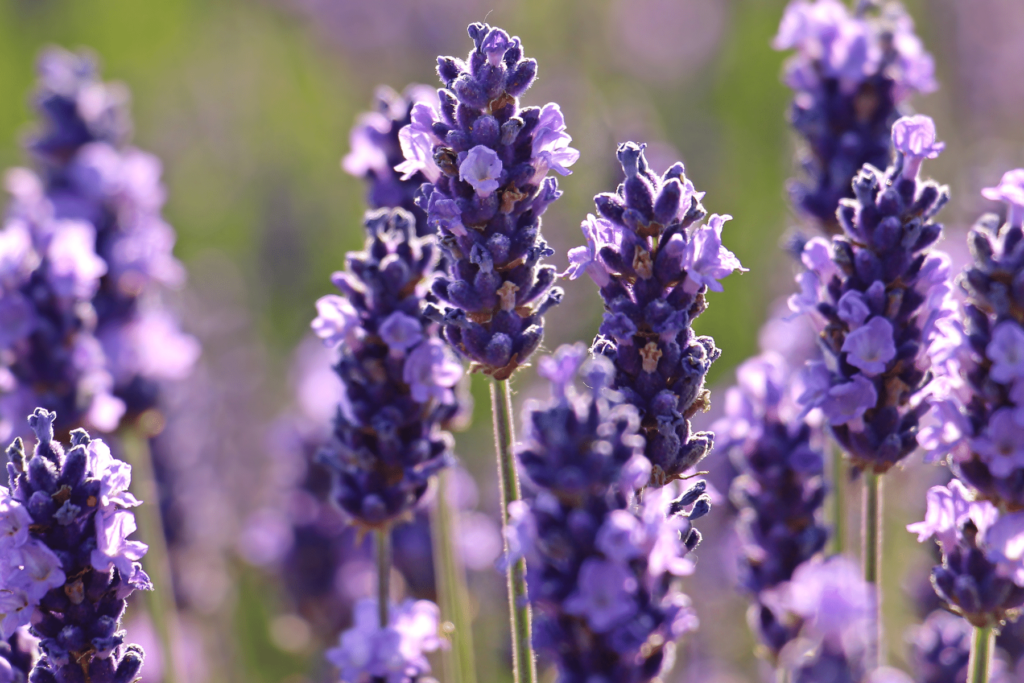
2. Marigold Plants
Marigold, an easy-to-grow annual flower, emits a strong scent that keeps mosquitoes away. You can grow it in pots and place it near your patio or the entrance to your home to keep insects away.
Vegetable gardens can also benefit from marigolds. According to the New York Botanical Garden, they can not only keep mosquitoes away but also garden pests like aphids, thrips, white flies, Mexican bean beetles, squash bugs, and tomato caterpillars.
How To Grow Marigolds
Marigolds are sun-loving flowers that adapt quickly to any soil as long as they receive plenty of sun.
All species of marigolds are very versatile and can be used alone or in a flower bed. They are also perfect plants for pots and planters to decorate a balcony or small outdoor space. Marigolds are also great choices for a rock garden.
To keep these colorful flowers strong, prune them on a regular basis.
Get started with marigolds by clicking here.
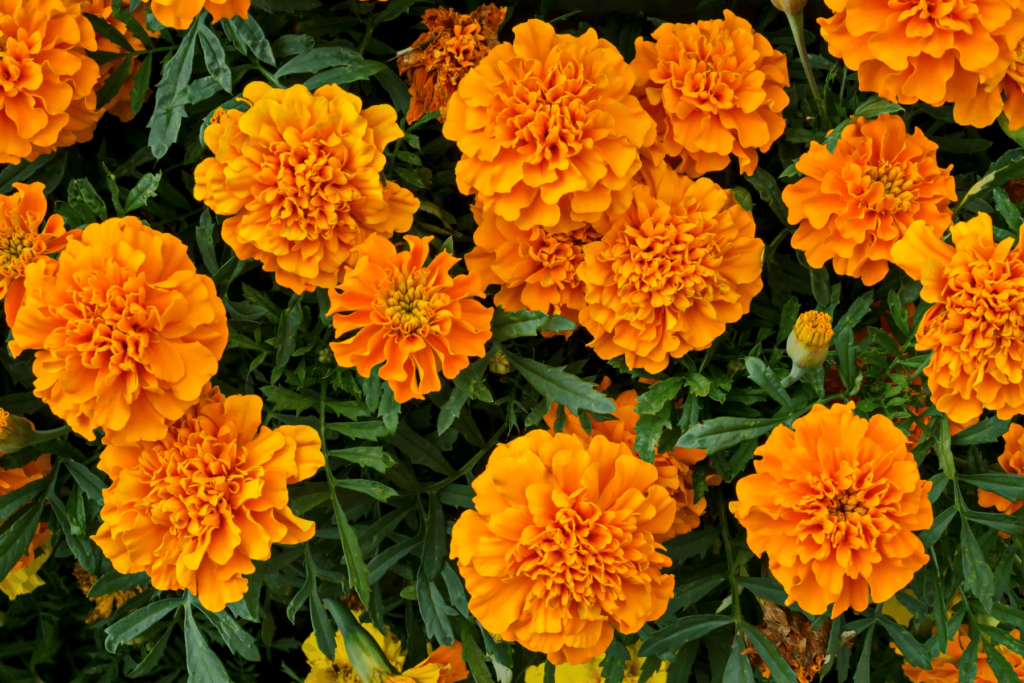
3. Citronella Plants
Known for its natural scents, citronella grass (or lemongrass) is the most commonly used natural ingredient in mosquito repellents. The Brooklyn Botanical Garden even recommends other lemon-scented plants like it to keep mosquitoes away.
How To Grow Citronella?
Citronella is a tropical plant that needs plenty of sun and fertile soil to thrive. For this reason, plant it in a place with little shade and out of the way of people due to the distinctive smell.
Mixing a good amount of organic fertilizer into the soil before planting can increase fertility.
The easiest way to multiply this plant into several others is by dividing the clumps and replanting them as new plants. Just separate some chunks and cut the leaves, leaving only the stems.
Also, don’t plant them too close together. One meter is recommended so that when they grow, they won’t compete or overlap.
For three large citronella plants, click here. You can also try these mosquito-repellant incense sticks by clicking here. These include the scents rosemary, lemongrass, peppermint, and of course, citronella.
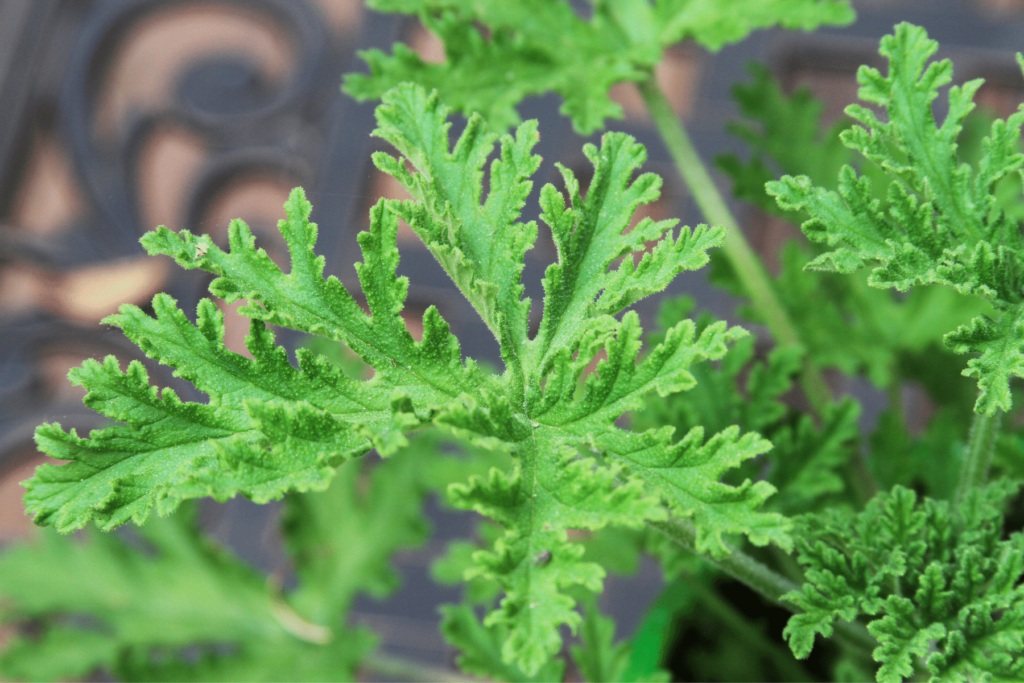
4. Catnip Plants
Catnip is a member of the mint family and grows extensively as a commercial plant and weed.
It is effortless to care for and may even begin to invade other areas of your garden. However, if you are willing to forgo the insidious nature of this plant, they are fantastic mosquito repellents.
In a study by Iowa State University, catnip was superior to deet, the chemical commonly used in insect repellents.
How To Grow Catnip
Prepare the rich soil in your garden bed or pot. Catnip seeds are tiny, but don’t let the size fool you because each seed turns into a little plant. Cover them with a thin layer of soil and water daily. Between seven and ten days, they will begin to germinate.
The catnip resists heat and cold well but does not like soggy soil, so water them regularly, waiting for the soil to almost dry out between one watering and the next. The best way to tell if you’re watering enough is to see if its leaves are withered. If they are, it needs more water. If the soil is moist, you can water it less.
Catnip does well in a sunny spot and indoors as long as it receives light for a few hours each day. If it is developing too slowly, it may need more sun.
If you keep your seedling in a pot, you can prune it to strengthen it and encourage the growth of more side branches. When it reaches the desired height, use your fingernails to remove the tip of the top of the plant, where new leaves grow.
If you keep it in the garden, you can prune it after flowering to strengthen it and prevent the plant from sowing new seedlings in the yard because they are great at taking over your flowerbed if you let them.
Click here to buy catnip seeds for planting.
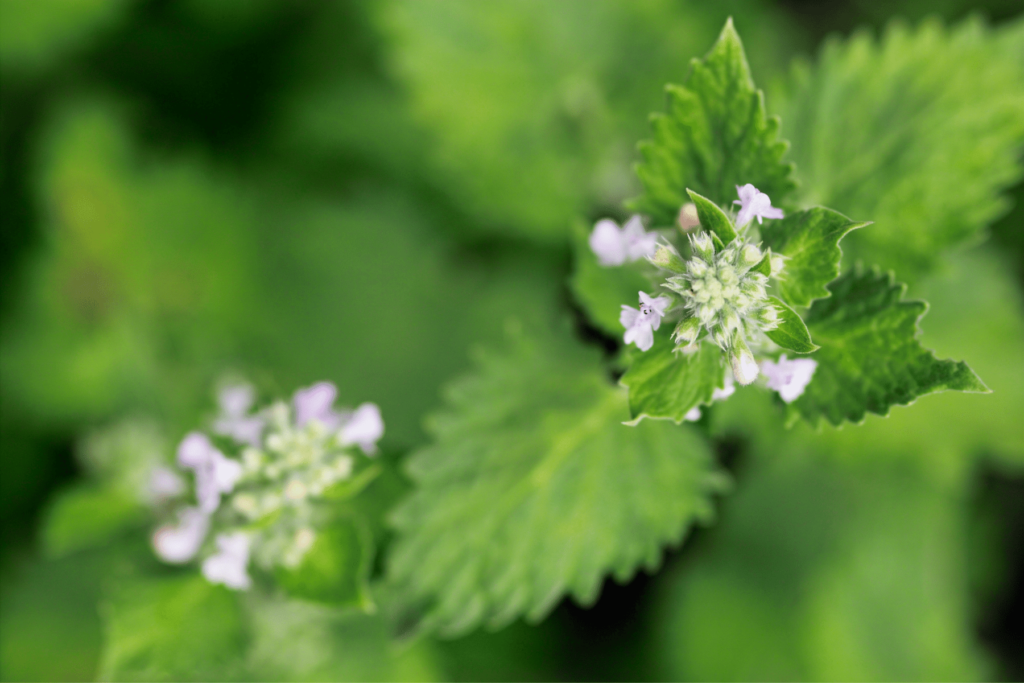
5. Rosemary Plants
Another excellent mosquito repellent is rosemary, which many of us are familiar with. Its woody aroma drives away mosquitoes, cabbage moths, and carrot flies.
They do best in warm, dry climates and thrive in pots. They can also be pruned into different shapes and sizes, adding to the decor.
While pests stay away, you can enjoy the herb’s fragrance and use it to spice up your dishes in the kitchen.
How To Grow Rosemary
The best way to grow rosemary is through the seedling or the rosemary seed. Both can be purchased in specialized stores.
There is another interesting method of planting rosemary: with cuttings. With this technique, you will need a 6 to an 8-inch branch of the plant.
When planting in pots, the first step is to put in a drainage layer with clay. It must be carefully assembled because very damp soil can end up hindering the plant. Then place the soil and sand mixed. Then put the seedling, the seed, or the branch in the pot, keeping it firm and in the center so that it can thrive.
Rosemary is pretty straightforward to manage. In the beginning, it is nice to water it more often and then leave the sandy soil intact by watering it only twice a week.
Rosemary is a plant that loves direct sunlight. Three to five hours of light per day are needed.
In addition to this care, you can prune which helps maintain the original appearance of the little plant. After ninety days, the rosemary will be ready to be harvested and enjoyed.
For an indoor or outdoor rosemary plant, click here.
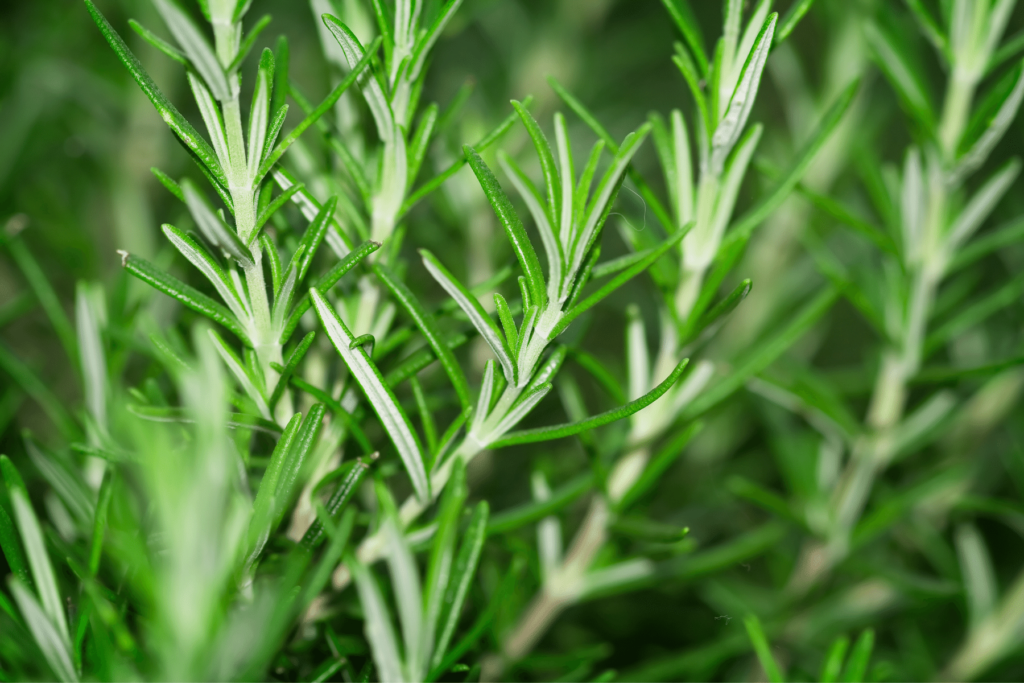
6. Basil Plants
Basil is another herb that can work as a pest repellent. The pungent smell that basil leaves exude is what keeps pests away. And since all types of basil keep insects away, feel free to explore and find suitable basil to mix in your garden.
Basil is also a good source of minerals, containing zinc, calcium, manganese, magnesium, iron, and potassium. Although straightforward, this spice’s cultivation deserves much attention, especially concerning pruning.
How To Grow Basil
This herb likes to stay moist, needs good drainage, and enjoys lots of sunlight. You can grow basil in pots or in a garden bed.
For planting, you need fluffy and fertile composted soil. The seeds should be planted shallow, about 1/2 inch deep, and contain a maximum of two or three seeds per hole.
The planting site (pot, planter, seedbed, or soil) must receive at least four hours of sunlight daily.
As for watering, it is not necessary to water every day because excess water can end the life of sweet basil. Therefore, watering should be done every two or three days or when the topsoil is dry.
Germination occurs in a period of five to 15 days. Once it has grown, it will have fresh leaves from early summer to mid-autumn, and sometimes even a little later depending on the climate.
Click here to purchase basil seeds.
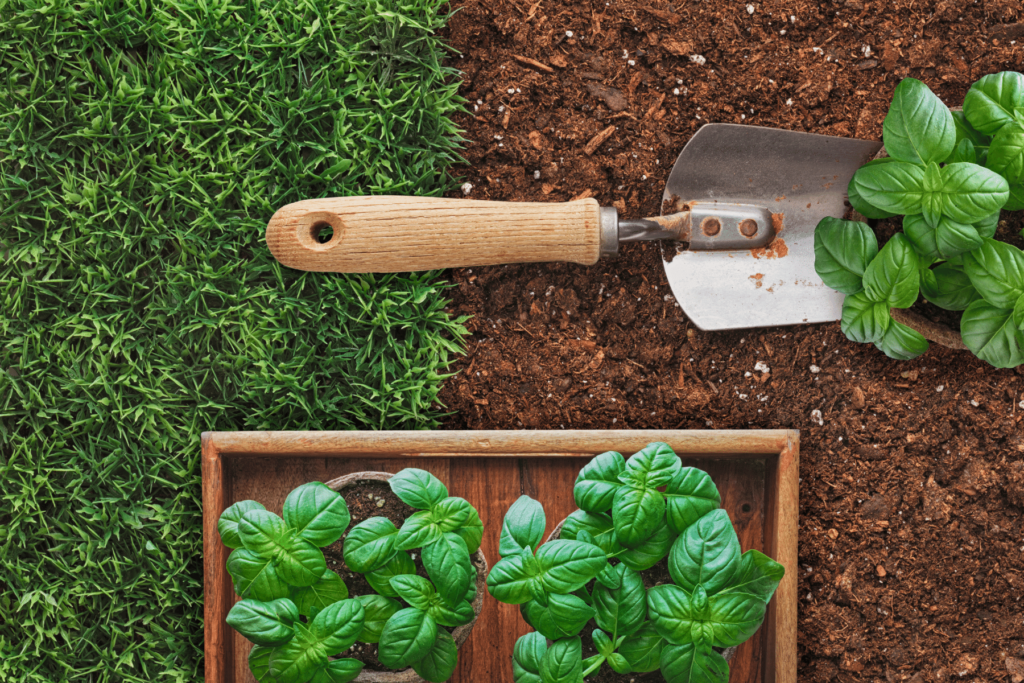
7. Scented Geraniums
Scented geraniums are popular mosquito-repellent plants that smell like lemon, reminiscent of citronella.
The intense fragrance keeps various types of pests away. These fast-growing plants like warm, sunny, dry climates, but if you are in a cool climate area, they can be grown in pots with constant pruning.
How To Grow Scented Geraniums
Easy to grow and develop in terracotta pots, geraniums can be grown alone or combined with other plants. Lavender is a great option. Some geraniums can also be grown in hanging baskets, which are beautiful.
Because of the fragrance offered by some branches and the edible leaves, they are sold as herbs. Their colors range from pink, red, purple, bronze, and white.
They like plenty of sun and moist but well-drained soil.
Grown as annuals, they should receive water in the summer and when development stops, stimulating a second flush of flowers. For planting, use peat-free multipurpose compost and a slow-release fertilizer. If you opt for a pot with other species, keep it watered at all times.
In late summer, cut back the seedlings to protect them from winter losses if you live in a colder climate. You can also move the pots indoors in the fall.
Click here for mixed geranium flower seeds.
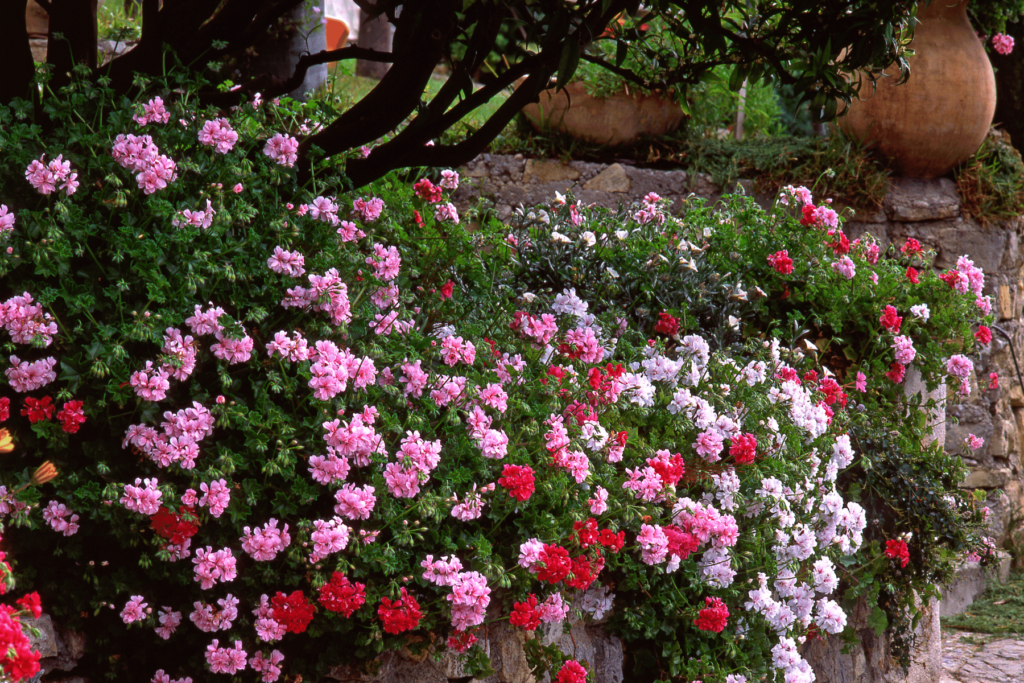
8. Bee Balm Plants
If you are looking for a way to attract good bugs, like bees and butterflies, while deterring the bad ones, then growing bee balm, also called monarda or horsemint, would be best.
To release the fragrant oils, crush their leaves. The summer months are also filled with colorful flowers in red, pink, lavender, white, and purple hues. So pretty!
How To Grow Bee Balm
Bee balm likes warm and cold environments. The plant is cold-resistant, so it generally does not suffer from health problems in chilly weather. During winter in colder regions, its above-ground parts may wilt but will grow back the following spring.
Bee balm does not thrive well in drought and prefers moist soil in a sunny or partially shaded environment. It will bloom more if it receives more than 14 hours of daylight daily. In the summer, however, bee balm needs adequate shade.
Click here to buy a bee balm seed packet.
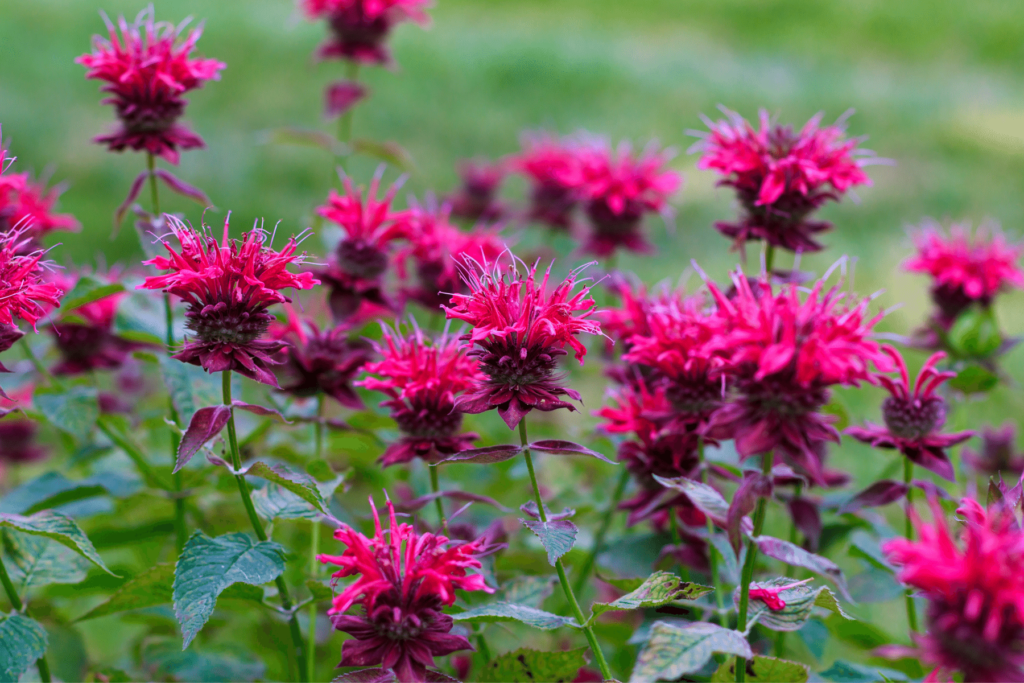
9. Mint Plants
Mint is an excellent non-toxic option for keeping mosquitoes, flies, and even ants away. The stronger the scent, the fewer insects you will get.
Whenever you want a leaf or two for your afternoon tea, plant it in a pot in your backyard. The leaves can even be dried and used as a natural pest control inside your home.
How To Grow Mint
Planting can be done in two ways – through seeds or seedlings. The cultivation site is recommended to be protected from the wind, as this can harm the plants.
The spacing varies according to the species, but a spacing of 13 to 17 inches between plants is adequate. For pot planting, a drainage system is required to prevent water from accumulating and the roots from rotting.
Planting is usually done by taking rhizomes, or root stalks, from well-developed, healthy plants with two or three buds on each rhizome. These can be planted directly in your garden bed or in pots.
Regarding light, mint can be grown in sunny places or in partial shade.
It is easier to keep the soil moist when grown in a partial shade and cool environment, especially when your region has a warmer climate. The soil must be constantly moist. Ideally, the soil should never dry out during the growth cycle of the plants.
In-home gardens, it is more convenient to grow mint in pots, planters, and other containers to more easily restrict its growth and prevent it from spreading and invading the space intended for other plants.
Since mint needs a lot of moisture, a self-irrigating pot is ideal for growing it, since it naturally humidifies the plant.
For four peppermint herb plants, click here.

10. Floss Flowers
Even a small garden in full sun is highlighted by a floss flower – a delicate, fuzzy, vibrantly colored flower that creates a velvety texture in any corner.
This attractive annual flower is ideal for flowerbeds or potted plants. When pets or humans ingest it, it becomes toxic due to coumarin, which repels mosquitoes, so be wary of using this plant if you have animals.
How To Grow Floss Flowers
Germination of planting from seed can take about sixty days. Because of this, you can produce from seedlings if you are impatient, like me. When growing from seeds, press them into the ground, but do not cover them with soil, since they need sunlight to germinate.
The pH of the soil does not matter much for growing floss flowers. Irrigation should be frequent, especially in the first stage of the plant’s development. Ensure good air circulation to avoid fungal diseases. A sign that the soil is poor in nutrients is when the leaves start to turn yellow.
Click here to buy blue floss flower seeds.

11. Sage Plants
Plant some sage nearby if you love gathering around a backyard campfire. Throw some of the plants into the flames, and their earthy smell will keep insects away. Alternatively, you can dry sage and use it to make homemade repellent.
How To Grow Sage
Sage does best when it is warm, but it must receive direct sunlight for a few hours daily.
The soil to plant sage should be well-drained, light, well-fertile, and rich in nitrogen. The plant is very tolerant of soil type and pH, but the soil can’t retain too much water because this will stunt its growth.
Sage can be planted next to thyme in beds or planters. They are friendly herbs and require the same types of care.
If you decide to germinate the seeds in seed beds, transplant them when the seedlings are big enough to be handled without damaging them. Planting the seeds about 1/2 an inch deep would be best, and germination takes about two to three weeks.
If you decide to plant sage in a pot, it is essential to know that it can survive in smaller banks, but if you want total plant growth, you should go for large pots.
Always make sure that there are no invasive plants probing your sage. After three years, the plants must be replaced to maintain good productivity and quality. After this period, they become very woody.
Watering should be done to keep the soil slightly moist. As we know, excess water is harmful to plants, especially in regions of low temperatures. There are plants that, once grown, are somewhat resistant to short periods of drought, but sage grows much better without a lack of water.
Click here to buy non-GMO sage seeds.
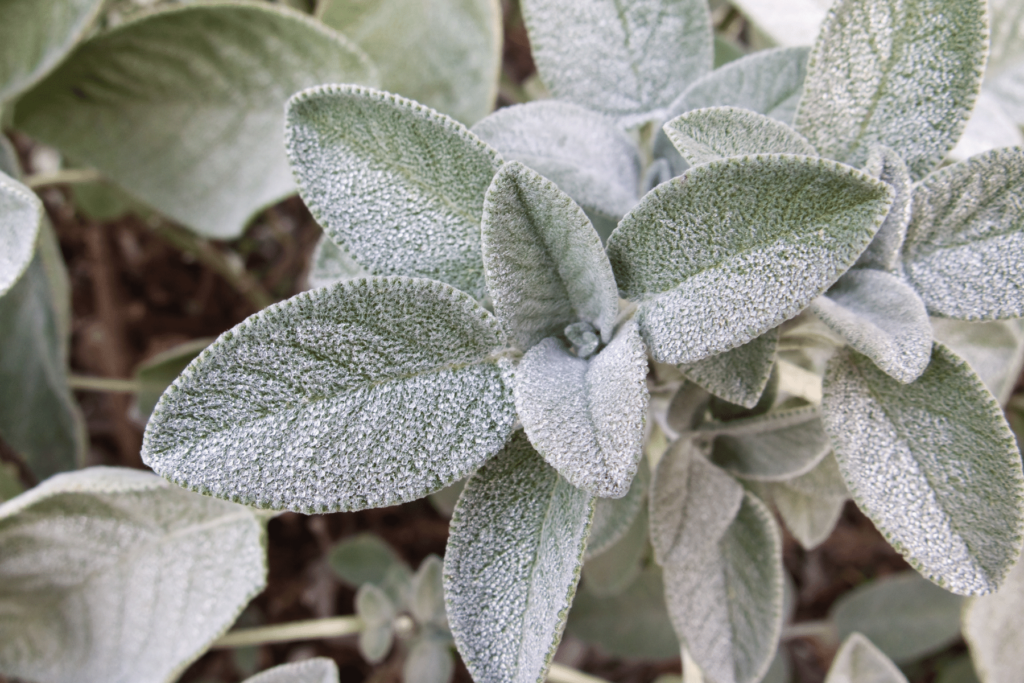
12. Allium Plants
These bulbs, which include garlic and onions, give off a strong fragrance that mosquitoes don’t like. Something is whimsical about the globe-shaped flowers of alliums, which seem to float on long stems.
In addition, you can also use them in recipes in the kitchen.
How To Grow Allium
Allium blooms faithfully year after year, and if the conditions are good (at least some sun and plenty of water), they will spread. You can dig them up and divide them in the fall to get more of these beautiful plants in your garden.
They are easy to grow. Once you have planted and given them well-fertilized soil, the alliums are not fragrant, but the large flower balls up to three inches in diameter are spectacular.
Choose a good location because they thrive best when planted in a garden that receives full sunlight for six hours or more.
And, of course, pay attention to alliums after heavy rain to ensure the soil drains well.
Besides scaring away mosquitoes, these plants can eliminate breeding grounds for mosquitoes.
To buy beautiful purple allium bulbs, click here.
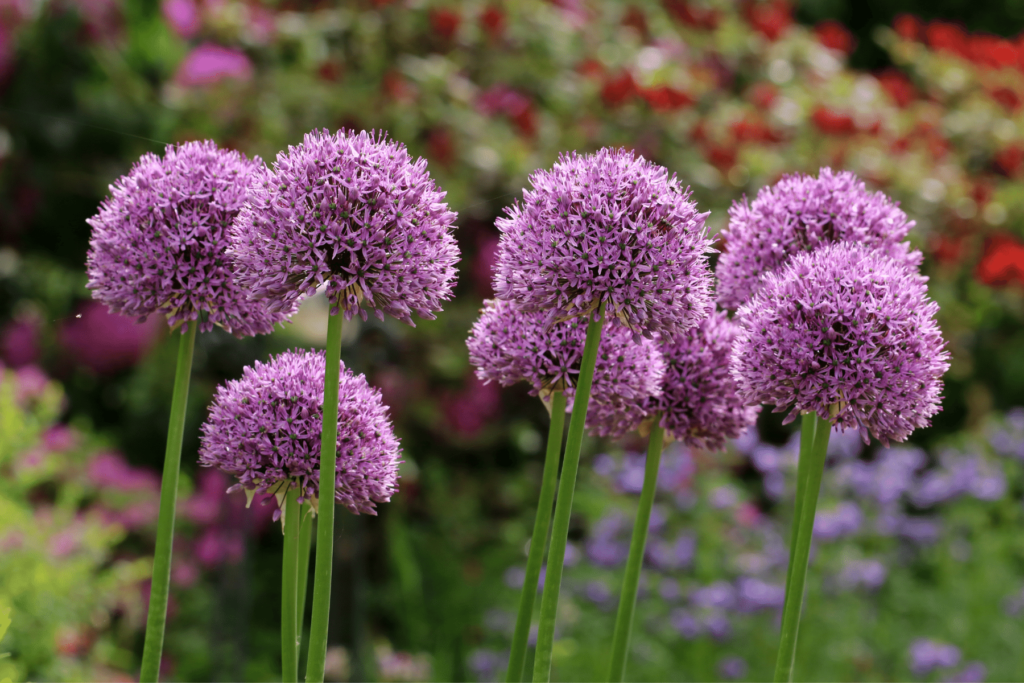
Best Plants to Keep Mosquitoes Away
My husband is the gardener in the house, so I’m going to share this blog post with him so he can litter our yard with these plants, and hopefully, I won’t be eaten alive when I walk outside.
What do you plant, or use in general, to keep mosquitoes away? I’m always open to hearing about lotions that don’t smell or feel like DEET. Find me on Instagram at @ChristinaAllDay and let me know!
For more on what you can do outside, click here to build your own patio cover, and visit this page for the best backyard swing sets.
